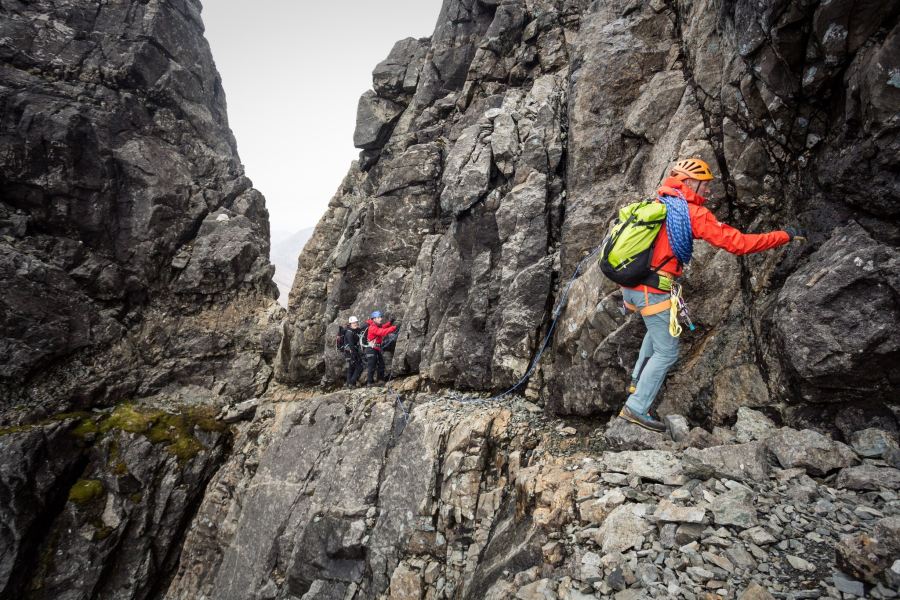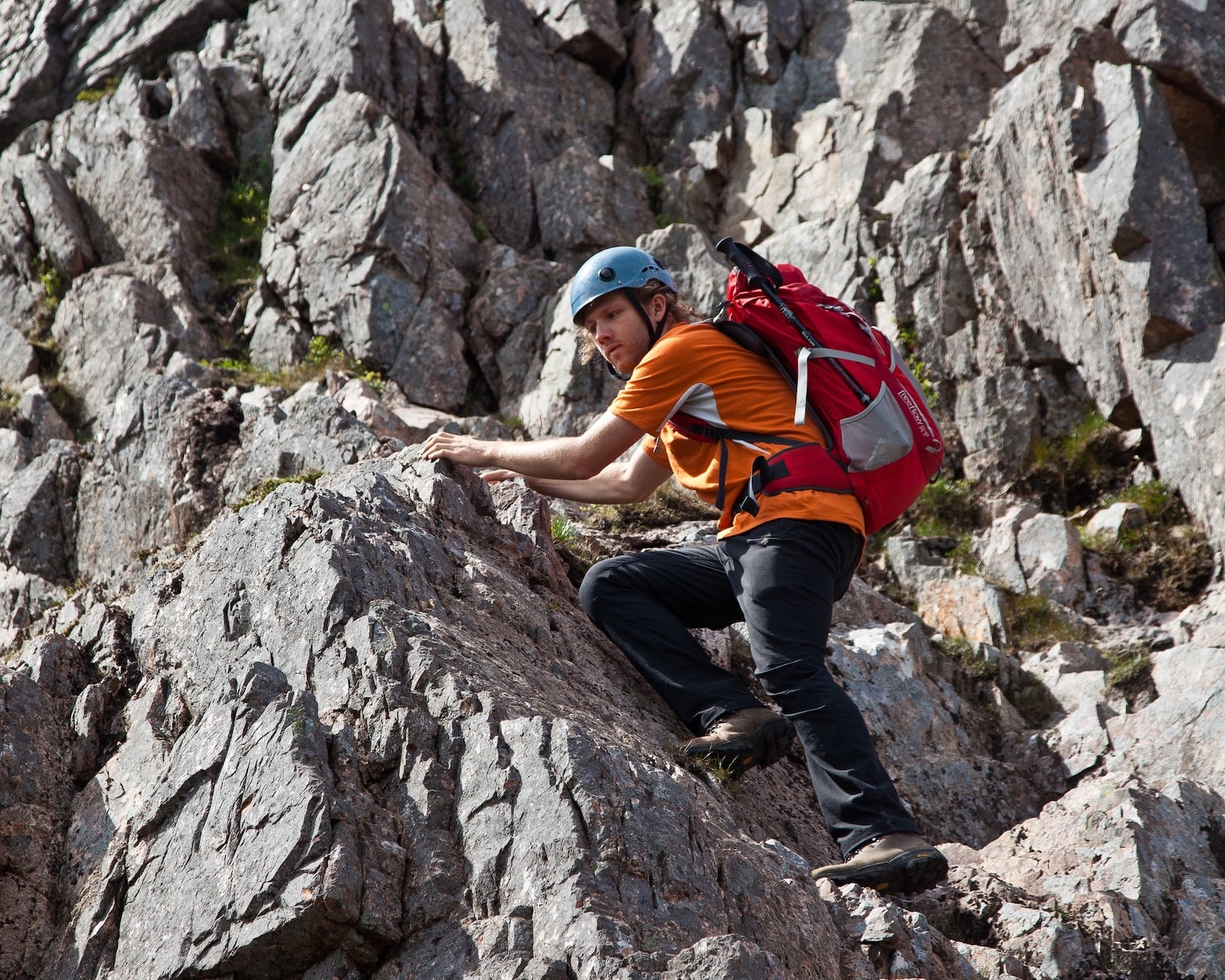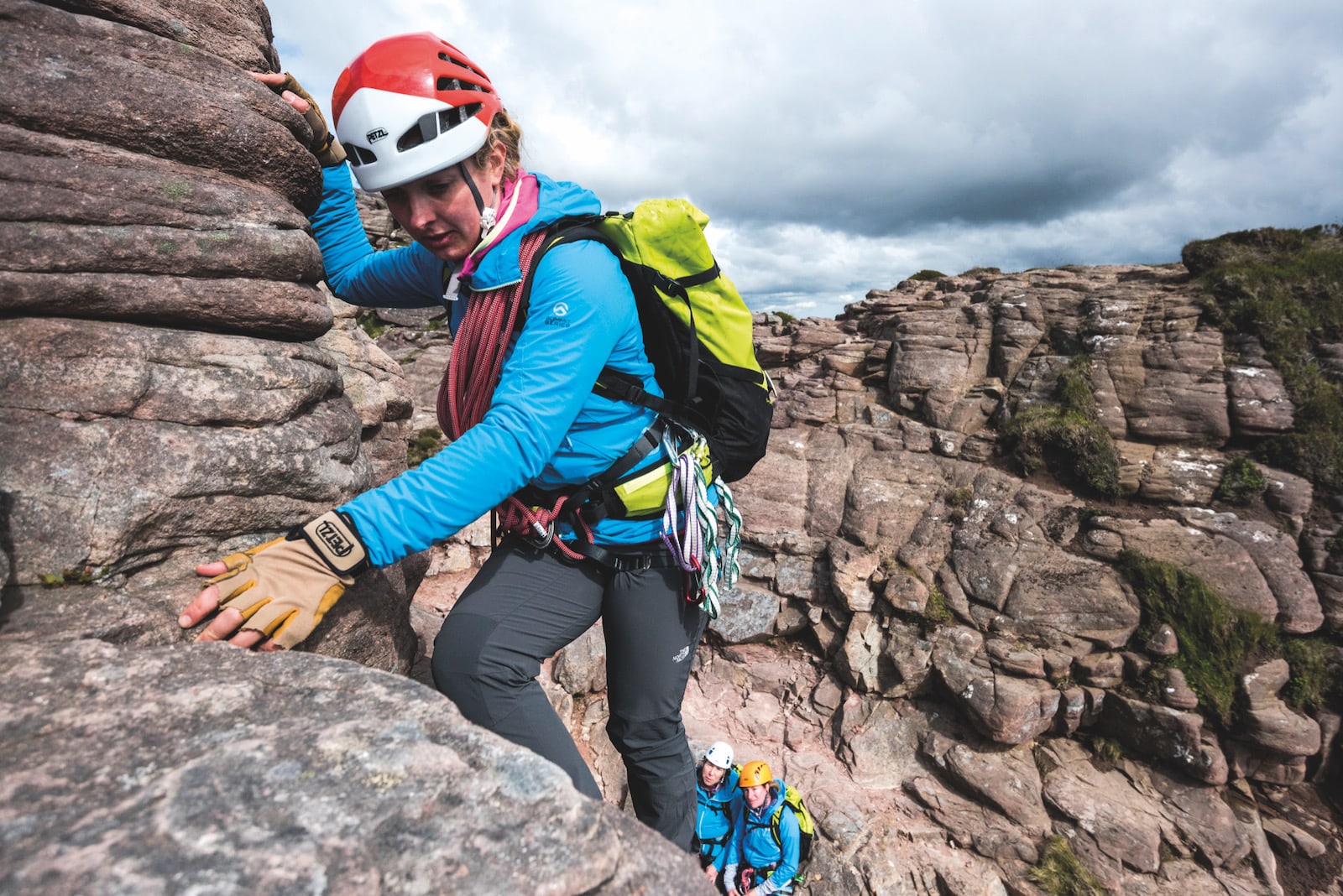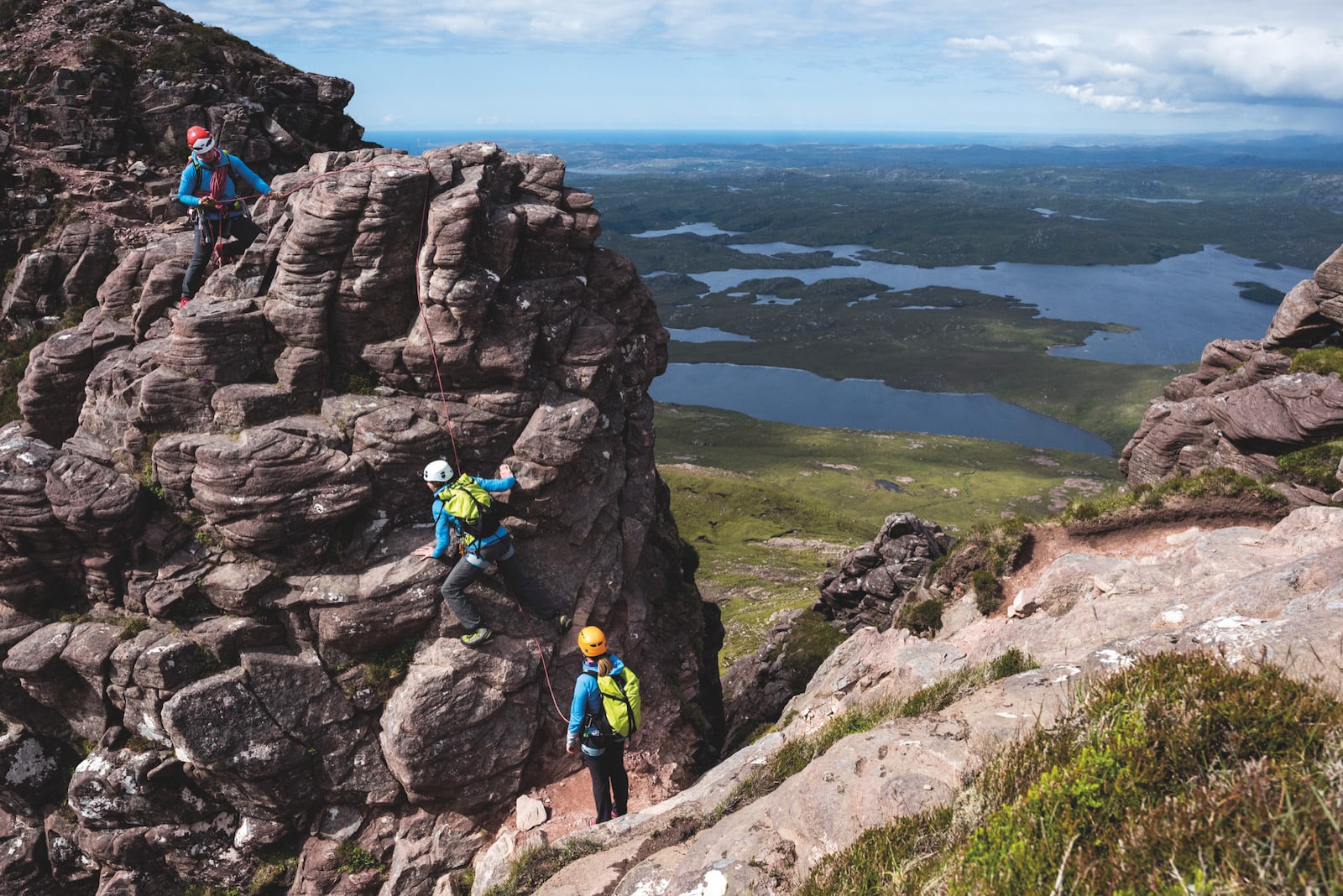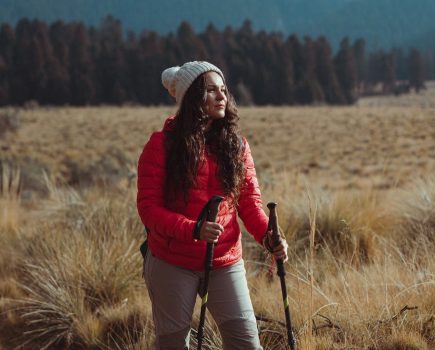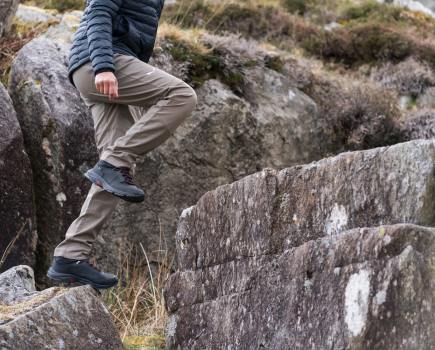Sandy Paterson from Glenmore Lodge explains how gaining scrambling skills can open up opportunities for greater adventure in the mountains.
This feature was first published in the November 2018 issue of The Great Outdoors.
Moving efficiently through complex terrain in the mountains is great fun, and in Britain, we have swathes of great mountaineering and scrambling terrain which you don’t have to be some sort of one-armed pull-up rock star to enjoy. However, it is certainly a step up in terms of commitment and consequence from hillwalking. To enjoy scrambling safely it is certainly time to up-skills.
Contents
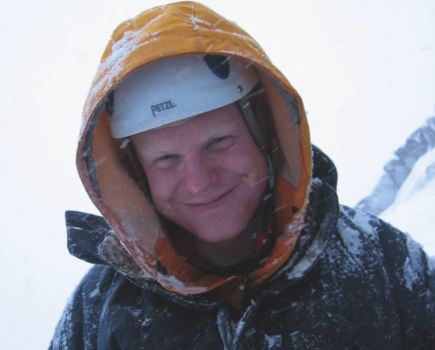
Written by Sandy Paterson
Sandy Paterson is a Mountaineering Instructor and International Mountain Leader based in Scotland but also works in Europe. When not working for Scotland’s national outdoor training centre, Glenmore Lodge, he also works as the Development Officer for the Association of Mountaineering Instructors and the Technical Officer for Mountain Training Scotland.
What is scrambling?
Before looking at the skills needed, it is worth trying to define and look at the grading of scrambling in the UK. For me, scrambling starts at any point I need my hands to make progress – this could just be for balance across a simple step, through to having to pull up to make a rock-climbing move. In the UK we have three general grades of scrambling; Grade 1 being the easiest and Grade 3 being the hardest. There is no single formal definition of what the grades mean, so here is my interpretation:
- Grade 1: Here you might use hands for balance. You don’t really need to pull at any point but moving through the terrain without using hands would be difficult. Generally, people don’t need or use a rope on this grade but will often carry one just in case; terrain you are normally comfortable on might seem very different when tired, in the wet or with a slight injury.
- Grade 2: On Grade 2 routes you might need to make one or two simple climbing style moves where the consequence of getting it wrong are very serious. These sections will be short lived and at times avoidable. To protect yourself on these harder sections you may well need to deploy climbing style ropework techniques, but you would only need the rope for these short sections.
- Grade 3: A route with more continuous sections of Grade 2 scrambling, interspersed with harder sections where you will be breaking into the easy rock climbing grades (Moderate and Difficult). If these harder sections were more continuous, then the route might receive a climbing grade, but the harder sections will only make up a short part of the route. Scrambling on Grade 3 routes, you need to have rope and climbing techniques to look after yourself. You would want to be comfortable soloing most Grade 2 scrambles otherwise you would need to use the rope too often and the route would take too long to complete.
Example routes
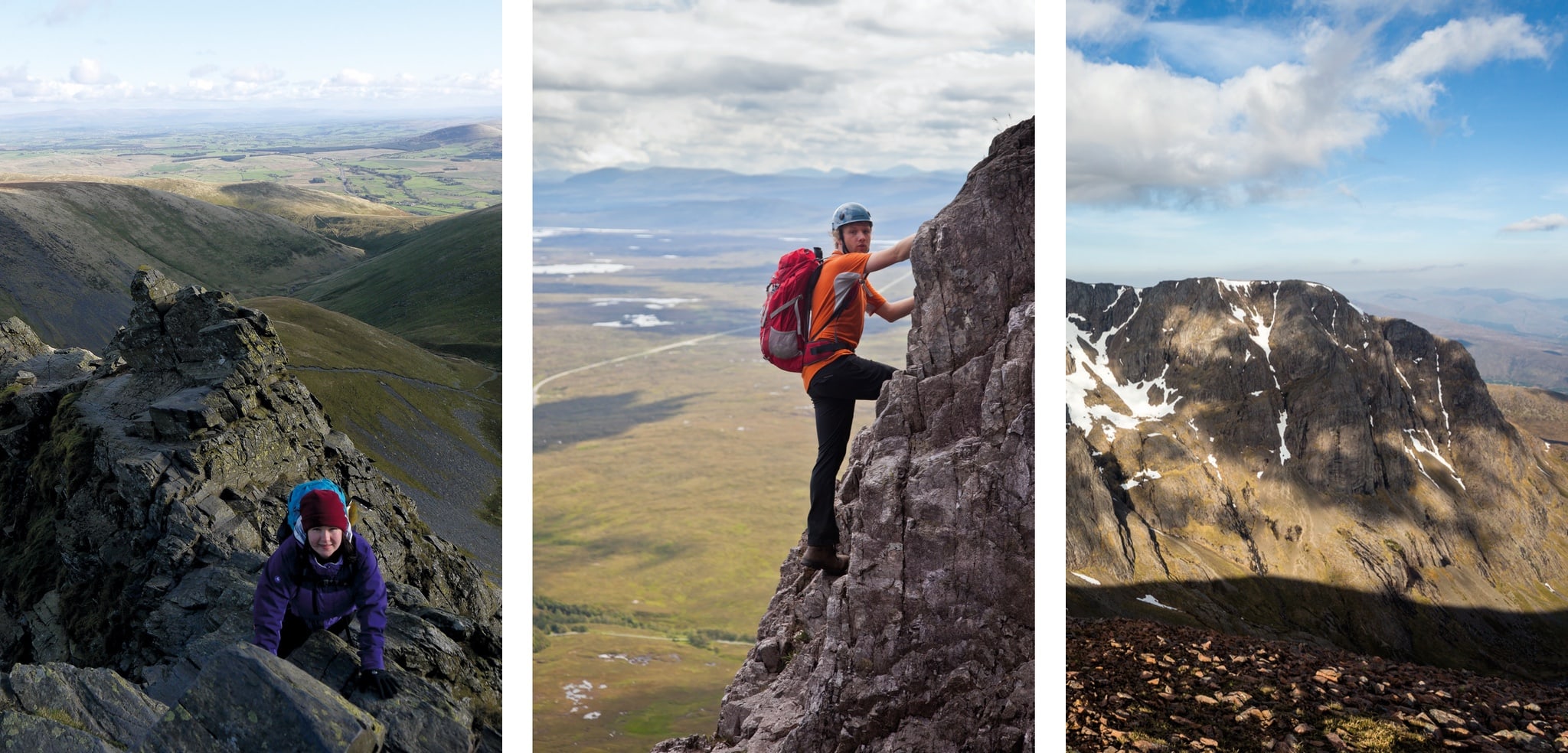
Left: Sharp Edge, Blencathra
Centre: Curved Ridge, Buachaille Etive Mor (image © Dougie Cunningham)
Right: Castle Ridge, Ben Nevis (image © Dougie Cunningham)
Grade 1
- Sharp Edge, Blencathra
- Ledge Route, Ben Nevis
- Crib Goch, Snowdon
Grade 2
- Curved Ridge, Buachaille Etive Mor
- Cam Crag Ridge, Langstrath
- North West Face Route, Glyder Fawr
Grade 3
- Castle Ridge, Ben Nevis
- Pinnacle Ridge, St. Sunday Crag
- Dolmen Ridge, Glyder Fach
Scrambling movement skills
While you may carry a rope and technical equipment on scrambling terrain, one of the real joys is being able to move with flow through this terrain and not have to use the rope too often. To increase the chances of this, it’s worth spending some time thinking about and developing your movement skills. The phrase that springs to my mind with movement skills is the Team Sky saying of ‘marginal gains’ – if we can make each of our scrambling movements slightly more efficient by the end of an eight-hour day, this will make a big difference.
So, what to think about? You want to stay in balance when you scramble; aim to keep your hips above your feet and take small steps – lots of small steps is better than one big one. Look at your feet as you move them, try to be as precise as possible when placing your foot, not scuffing and scrapping of your boot on the rock. Once your foot is in place, actively push through it and make sure that it does not move.
Over time, if you think about your movement skills and patterns they will develop, and you will find yourself much more comfortable in scrambling terrain. This will in turn lead to you feeling less tired at the end of the route and so enjoying the whole experience more.
The ABC of good movement
- Agility
- Balance
- Coordination
Route reading
There are some great scrambling guidebooks covering the main mountain areas of the
UK (a few are listed below) however, traditionally, a scrambling route description is quite vague. This is not simply to make life difficult but because routes are often long and have lots of possible variations within them. The guidebook will identify key sections, but much of the emphasis is put on you to pick your own route.
Look out for key features! The description will mention key features and identifying these on route will help you keep track of where you are.
When I am travelling through this terrain, I look for a few things to help me with route reading:
- Does the rock look worn or polished? If you are on a popular route, then the chances are you should see signs of travel from previous ascents.
- Does the route look in fitting with the grade? Remember the grade descriptions from earlier – does the section you are looking at fit in with these? If not, and it is actually the correct way, this will probably be mentioned in the guidebook description – you might come across a phrase like ‘climb the improbable looking corner’!
Guidebooks
There are a huge range of scrambling guides available (many of them published by Cicerone). Here are a few to get you started:
- Rock Climbing by Libby Peters. A great instructional book that deals with both rock climbing and scrambling skills. mountain-training.org/publications/rock-climbing
- North Wales Scrambles by Garry Smith. A great guidebook to the scrambles of North Wales. northernedgebooks.co.uk/scrambles
- Scrambles in the Lake District North and South by Brian Evans. The most up to date scrambling guides to the Lake District. cicerone.co.uk/scrambles-in-the- lake-district-north
- The Scottish Mountaineering Club publish a range of guide books to cover scrambling in Scotland. smc.org.uk/publications/scrambling
Technical skills
There will be times on the harder scrambles (Grade 2 and upwards dependent on your comfort levels) when you might want to use a rope for extra security. Knowing how to do this safely and efficiently is very important.
The techniques are basically the same as rock climbing – you will need a harness, helmet, rope and a small mountaineering rack. Depending on the route you are doing, you might be able to get away with a 30m length of full weight climbing rope, but if in doubt take a normal 50m rope; it has never been the weight of my rope that has stopped me getting to the top of mountains!
A mountaineering rack might consist of half a set of nuts, 2 x hexes, 3 x 60cm slings as extenders, 2 x 120cm slings with locking carabiners, 1 x 240cm sling and a few spare locking carabiners.
It is beyond the scope of this article to teach the use of the rope, but you should make sure you are happy that you can pitch climb short sections as well as abseil off sections should you need to. The Glenmore Lodge YouTube page has some great instructional clips on scrambling techniques.
First steps
Putting together the gear and techniques above and developing your skills can often seem like a daunting task. My advice is to build things up slowly. Start out on Grade 1 scrambles and do plenty of these before heading onto Grade 2 and so on. Also, each time you try something new – a harder scramble, more remote route, etc – try to stack the odds in your favour, make sure you are feeling well, are fit, have plenty of time, have a partner with you that you know well, and the weather is good. By doing this and biting off bite-size chunks you will soon be scrambling and mountaineering to your heart’s content. If in doubt about any of the technical skills or how to make the next step, don’t be reticent in looking for some instruction from a suitably qualified instructor.
Header image © Nadir Khan

